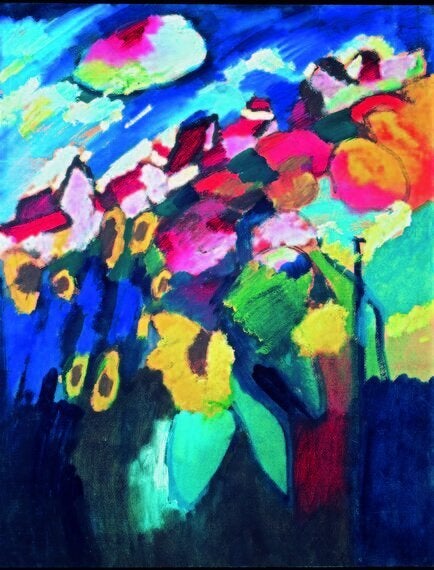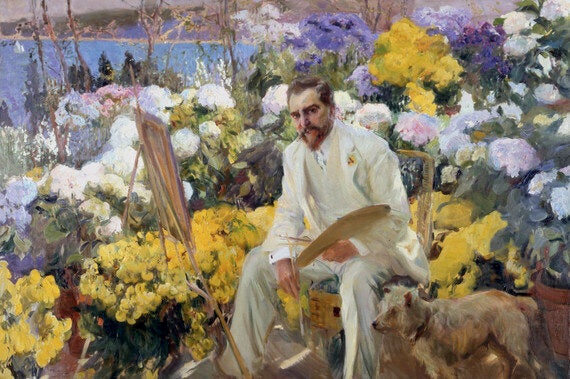
The Royal Academy of Arts' new blockbuster exhibition Painting the Modern Garden: Monet to Matisse, is a triumph. It examines the role gardens played in Impressionist art and, rightly, frames this genre as radical and innovative.
The art here is unquestionably beautiful, yes, but the subject matter wasn't picked by Monet and his contemporaries for prettiness alone. We go to gardens for solitude, for relaxation, for peace and for reflection. This was, therefore, as much an interrogation of man's emotional state as well as an excuse to experiment with bold colour palettes and challenging compositions.
Yet even more than this, the end of the 19th century and early 20th century was an era of rapid industrialisation and, eventually, war. In this context, the subject matter of gardens reflected a need, a direction, for man to remain connected to nature, to the Earth.
The exhibition is dense with masterpieces - Manets and Monets, Klimt and Van Gogh, Sargent and Munch, Renoir and Pissarro, Bonnard and Vuillard, Cassatt and Cezanne..... The list of artists of considerable repute with works on display here is eye-watering. And these are works drawn from collections the world over - private as well as from international galleries.

And plaudits have to go to the curatorial team at the RA who have taken great effort in the lay out of the exhibition. The galleries investigate different types of gardens - as well as Monet's diligently designed Giverny, there's Renoir's exploration of more wild, unmanicured gardens. And we're not limited to French gardens either - John Singer Sargent looks at the Cotswolds, Kroyer takes us to the gardens of Denmark, whilst Sorolla looks at the impact of the baking Spanish sun.
Effort has been made even for the galleries themselves to reflect gardens, with a wonderful cloistered effect mid-way through and garden benches taking the place of more traditional gallery seating.
There is so much to admire here, from the tranquility of Monet's water lilies to Caillebotte's mastery of light and shadow, from the bright vivid hue of Sargent's Poppies, 1886, to the cooling shade of Liebermann's Birch Avenue, 1918; from Monet's lush carpet of purple violets to the scorching sun that bleaches the canvas in Nordstrom's Gardens at Grez, 1884.
And what Monet and his contemporaries started, the Post-Impressionists, the Avant-Garde and the Expressionists responded to and developed.
Van Gogh's garden is almost brutal in its simple, pared down design, whereas the brilliant colours and bold brushstrokes of Nolde's Flower Garden, 1922, and Kandinsky's Murnau Garden II, 1910, take your breath away.

Yet for all the beauty, there is a powerful emotional punch in this show and it comes, as it should, just as the exhibition draws to a close.
Monet's weeping willows were his response to the First World War, painted in the wake of the Battle of the Somme. These mournful paintings hang together in the dim light of the penultimate room. Their branches heavy, their colours muted. These are powerful paintings.
And then, if it's possible for there to be a jewel in this already sparkling crown, the exhibition keeps its best for last. Monet's extraordinary Agapanthus Triptych dominates the final room - its three vast panels hung together to create a panoramic view. Never before have these monumental works been seen in the UK, their permanent residence being the Musée de l'Orangerie in Paris. It is a stunning finale to a stunning exhibition.
Royal Academy of Arts, London to April 20, 2016
Admission £17.60 (£16 without Gift Aid donation). Concessions available.
Image Credits:
Claude Monet, Nympheas (Waterlilies), 1914-15. Oil on canvas, 160.7 x 180.3 cm. Portland Art Museum, Oregon. Museum Purchase: Helen Thurston Ayer Fund, 59.16 © Portland Art Museum, Portland, Oregon.
Wassily Kandinsky, Murnau The Garden II, 1910. Oil on cardboard, 67 x 51 cm. Merzbacher Kunststiftung. Photo © Merzbacher Kunststiftung.
Joaquin Sorolla, Louis Comfort Tiffany, 1911. Oil on canvas, 150 x 225.5 cm. On loan from the Hispanic Society of America, New York, NY. Photo © Courtesy of The Hispanic Society of America, New York.